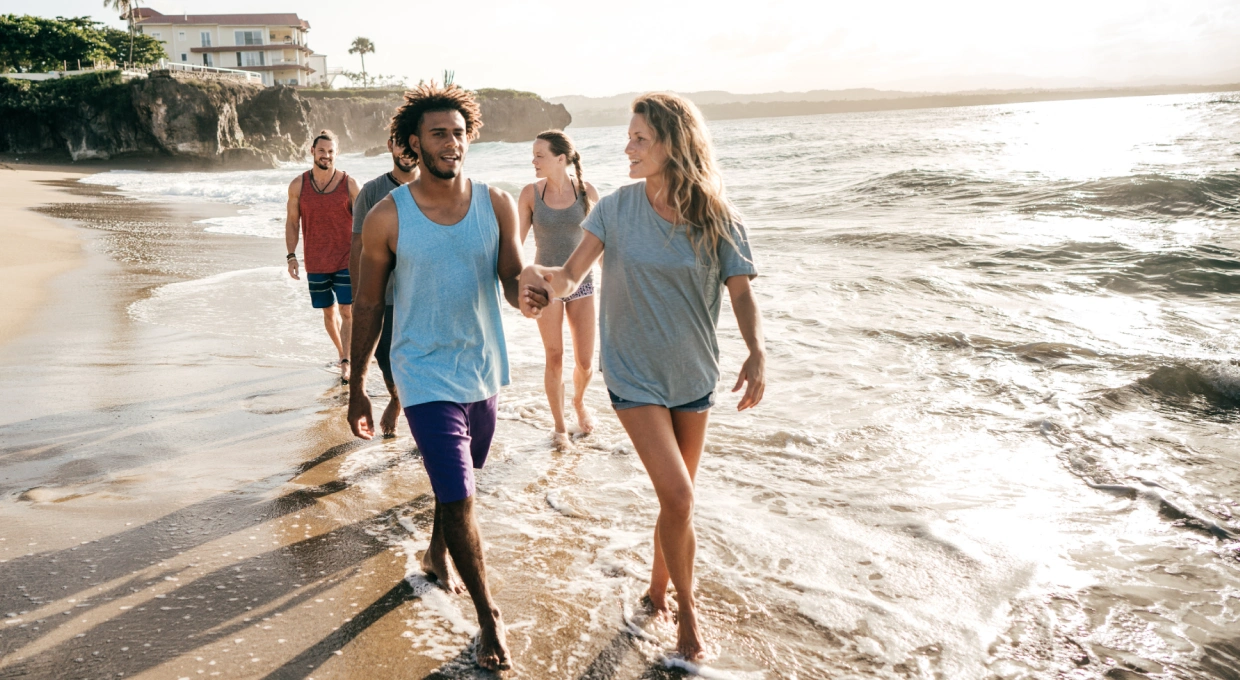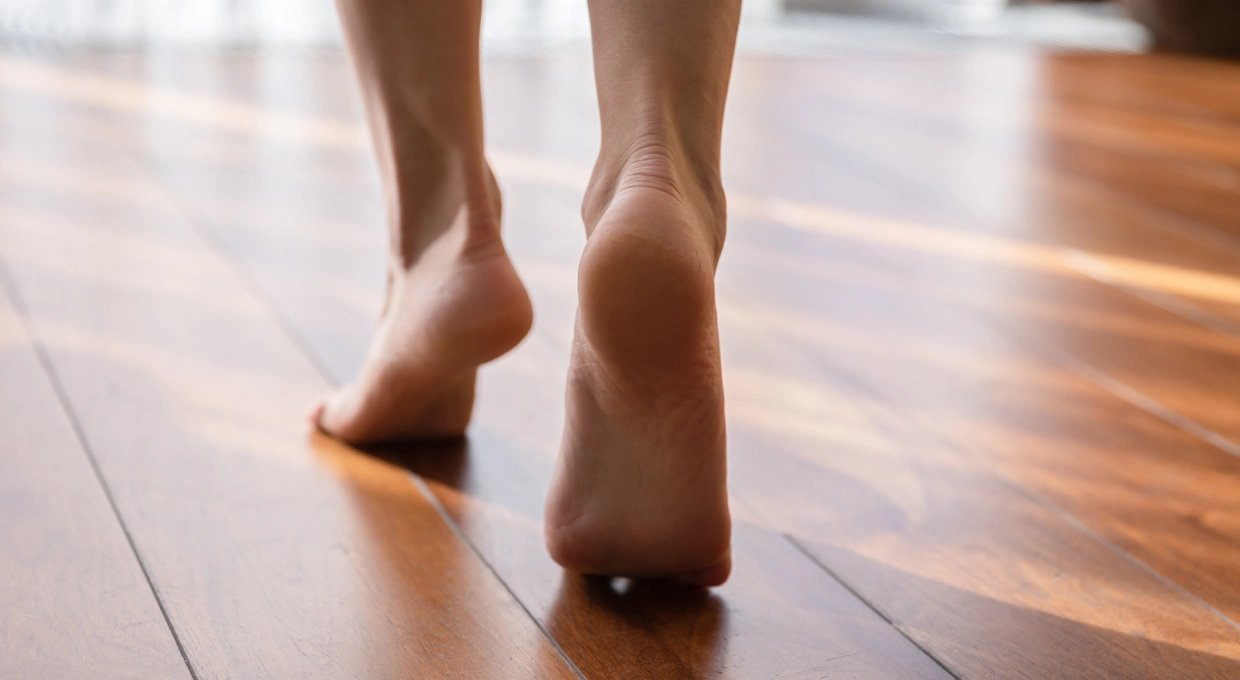Barefoot walking is a practice that has gained popularity in recent years, not only for its simplicity, but for the numerous health benefits it offers. Often referred to as “earthing” or “grounding,” walking barefoot allows our feet to connect directly with the earth, which can have a positive impact on our physical and mental well-being. Below, we’ll explore the benefits of barefoot walking, as well as some tips for safely incorporating it into your daily routine.
1. Physical Benefits of Walking Barefoot
a) Posture and Balance Improvement
Walking barefoot promotes a more natural posture, helping to properly align the spine and joints. Without the interference of footwear, the feet can move freely and adjust to the surface they are walking on, improving balance and coordination. This is especially beneficial for people who spend a lot of time on their feet or who play sports, as better posture reduces the risk of injury. Tip: Start by walking barefoot on soft surfaces such as grass or sand to get used to the feeling and progressively improve your balance.
b) Strengthening of the Foot Muscles
Modern footwear, while comfortable, often restricts the natural movement of the feet and can weaken muscles over time. Walking barefoot activates otherwise inactive muscles, strengthening the arch of the foot and other muscles essential for support and mobility. This not only helps prevent common problems such as flat feet, but also improves endurance and agility. Tip: Practice stretching and foot strengthening exercises along with barefoot walking to maximize the benefits.
c) Nerve Stimulation and Improved Circulation
The feet are extremely sensitive and contain thousands of nerve endings that, when properly stimulated, can improve the overall health of the body. Walking barefoot on different surfaces stimulates these nerves and improves blood circulation, which can help reduce inflammation and promote better cardiovascular health. Tip: Try walking barefoot on varied surfaces, such as sand, grass and smooth stone, to stimulate different parts of the foot.
Mental Health Benefits
a) Stress and Anxiety Reduction
Direct contact with the earth has a calming effect on the nervous system. Studies suggest that walking barefoot can reduce levels of the stress hormone cortisol, helping to relieve anxiety and promote a sense of well-being. In addition, the practice of grounding can help balance the autonomic nervous system, promoting a state of deep relaxation. Tip: Spend at least 10-15 minutes a day walking barefoot in a natural environment, such as a park or garden, to enjoy its calming effects.
b) Connection with Nature
In an increasingly digitized world, reconnecting with nature has become essential to our mental well-being. Walking barefoot is a simple yet effective way to re-establish that connection, providing a sense of presence and gratitude for the natural environment. This practice also encourages meditation and mindfulness, which can improve mood and mental clarity. Tip: Try combining barefoot walking with breathing exercises or meditation for a more enriching experience.
3. Tips to Start Walking Barefoot Safely
While walking barefoot has many benefits, it is important to do so safely to avoid injury or discomfort. Here are some tips to get you started:

a) Choose Suitable Surfaces
When starting out, it is best to walk on soft, natural surfaces such as grass, sand, or moist soil. Avoid hard or uneven surfaces that may cause pain or injury. Over time, as your feet get stronger, you can experiment with different types of terrain. Tip: Check the area before walking to make sure there are no sharp or dangerous objects.
b) Gradually Increases Time
If you are not used to walking barefoot, start with short sessions of 5 to 10 minutes and gradually increase the time as you feel more comfortable. This will allow your feet to adapt and avoid overloading or discomfort. Tip: Listen to your body and take breaks if you feel pain or discomfort in your feet.
c) Take care of the hygiene and health of your feet.
After walking barefoot, it is important to wash and dry your feet thoroughly to prevent infection. If you walk on outdoor surfaces, be sure to wipe off any dirt or particles that may have adhered to the skin. Tip: Apply a moisturizer to keep skin soft and prevent dryness, especially if you walk barefoot frequently.
4. Considerations and Precautions
Although barefoot walking is beneficial, it is not suitable for everyone. People with mobility problems, diabetes, or specific foot conditions should consult a podiatrist before beginning this practice. In addition, it is important to remember that walking barefoot on certain urban surfaces or public areas may increase the risk of infection or injury, so it is always best to walk barefoot in controlled, natural environments.
Conclusion
Barefoot walking is a simple and accessible practice that offers numerous physical and mental health benefits. From improving posture and strengthening foot muscles to reducing stress and connecting with nature, the benefits are vast. If done safely and gradually, you can integrate this practice into your daily life to enjoy better overall health and well-being. If you have questions or specific conditions, consult with a professional before you begin.



